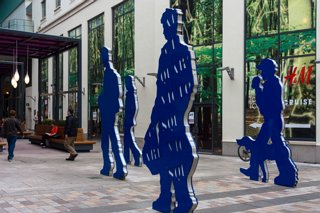BELFAST AS IT WAS IN 2011
Belfast in 2011 was a city of contrasts. It was the largest area in Northern Ireland with a population of 333,871 according to the 2011 Census. However, it was also a city marked by significant unrest.
One of the major events that year were the 2011 Northern Ireland riots. These riots occurred between 20 June 2011 and 16 July 2011, starting originally in Belfast, before spreading to other parts of Northern Ireland. They were initiated by the Ulster Volunteer Force.
The sectarian violence began around 21:00 BST on the night of Monday 20 June, when a large number of loyalists made their way from the unionist Mount and Castlereagh Street areas to the nationalist Short Strand enclave. This provoked a response from the nationalists. The Police Service of Northern Ireland (PSNI) Assistant Chief Constable Alistair Finlay said that around 500–600 people were involved in the rioting.
The clashes saw various dangerous objects such as petrol bombs, bricks, bottles, fireworks and smoke bombs thrown by both sides in what police described as "high-level, life-threatening, organised, serious and sustained" attack by people "hell-bent on disorder". At one point six shots were fired from the nationalist Short Strand area followed by about five shots from the loyalist Pitt Park. Two shots hit a police Land Rover in what the PSNI claimed was attempted murder of their officers. One officer suffered eye injuries when a laser pen was being used to blind officers. The riots in Short Strand were described by politicians as the worst violence in the area in a decade.
Despite these events, it's important to note that the violence was confined to a small corner of a city that otherwise appears to be trying to move on from its troubled past. The actual violence was amplified in the international media due to the wounding of a respected press photographer.
One of the major events that year were the 2011 Northern Ireland riots. These riots occurred between 20 June 2011 and 16 July 2011, starting originally in Belfast, before spreading to other parts of Northern Ireland. They were initiated by the Ulster Volunteer Force.
The sectarian violence began around 21:00 BST on the night of Monday 20 June, when a large number of loyalists made their way from the unionist Mount and Castlereagh Street areas to the nationalist Short Strand enclave. This provoked a response from the nationalists. The Police Service of Northern Ireland (PSNI) Assistant Chief Constable Alistair Finlay said that around 500–600 people were involved in the rioting.
The clashes saw various dangerous objects such as petrol bombs, bricks, bottles, fireworks and smoke bombs thrown by both sides in what police described as "high-level, life-threatening, organised, serious and sustained" attack by people "hell-bent on disorder". At one point six shots were fired from the nationalist Short Strand area followed by about five shots from the loyalist Pitt Park. Two shots hit a police Land Rover in what the PSNI claimed was attempted murder of their officers. One officer suffered eye injuries when a laser pen was being used to blind officers. The riots in Short Strand were described by politicians as the worst violence in the area in a decade.
Despite these events, it's important to note that the violence was confined to a small corner of a city that otherwise appears to be trying to move on from its troubled past. The actual violence was amplified in the international media due to the wounding of a respected press photographer.

BELFAST AS IT WAS IN 2011